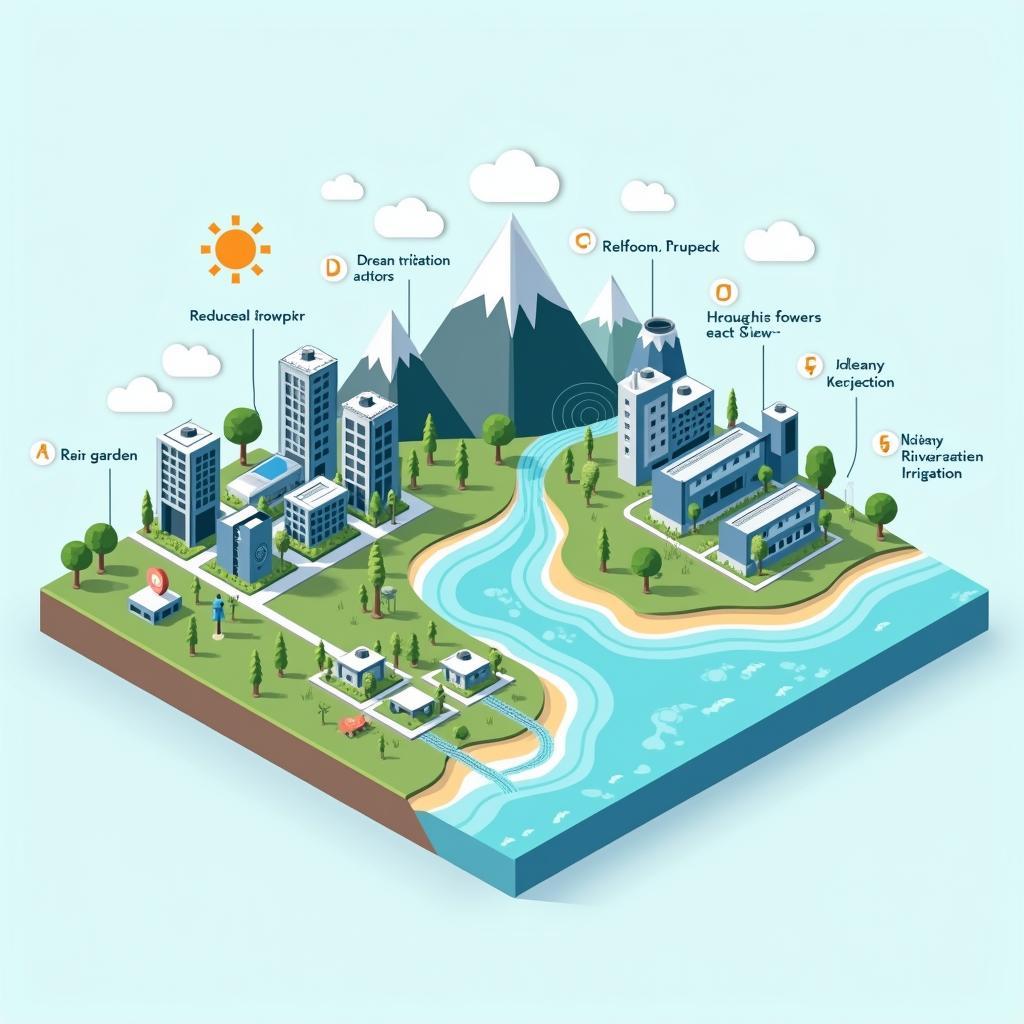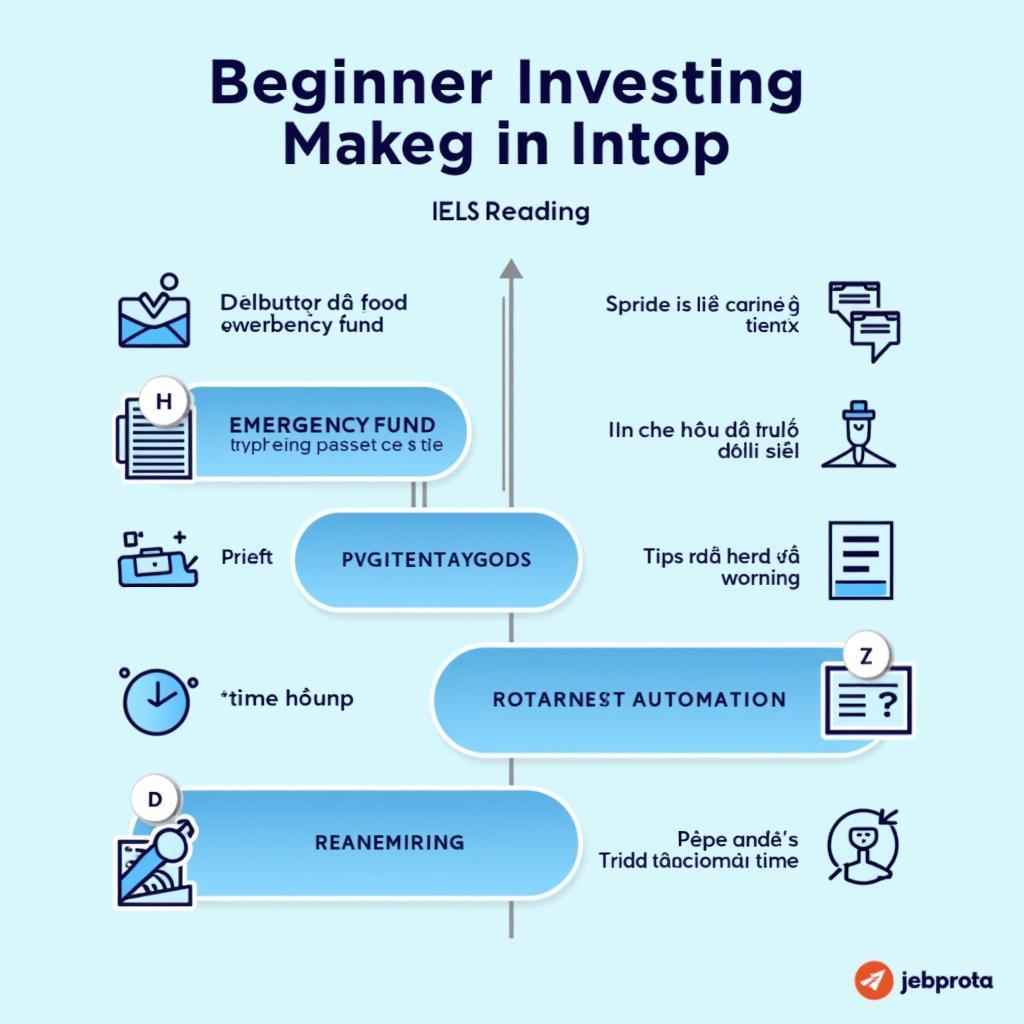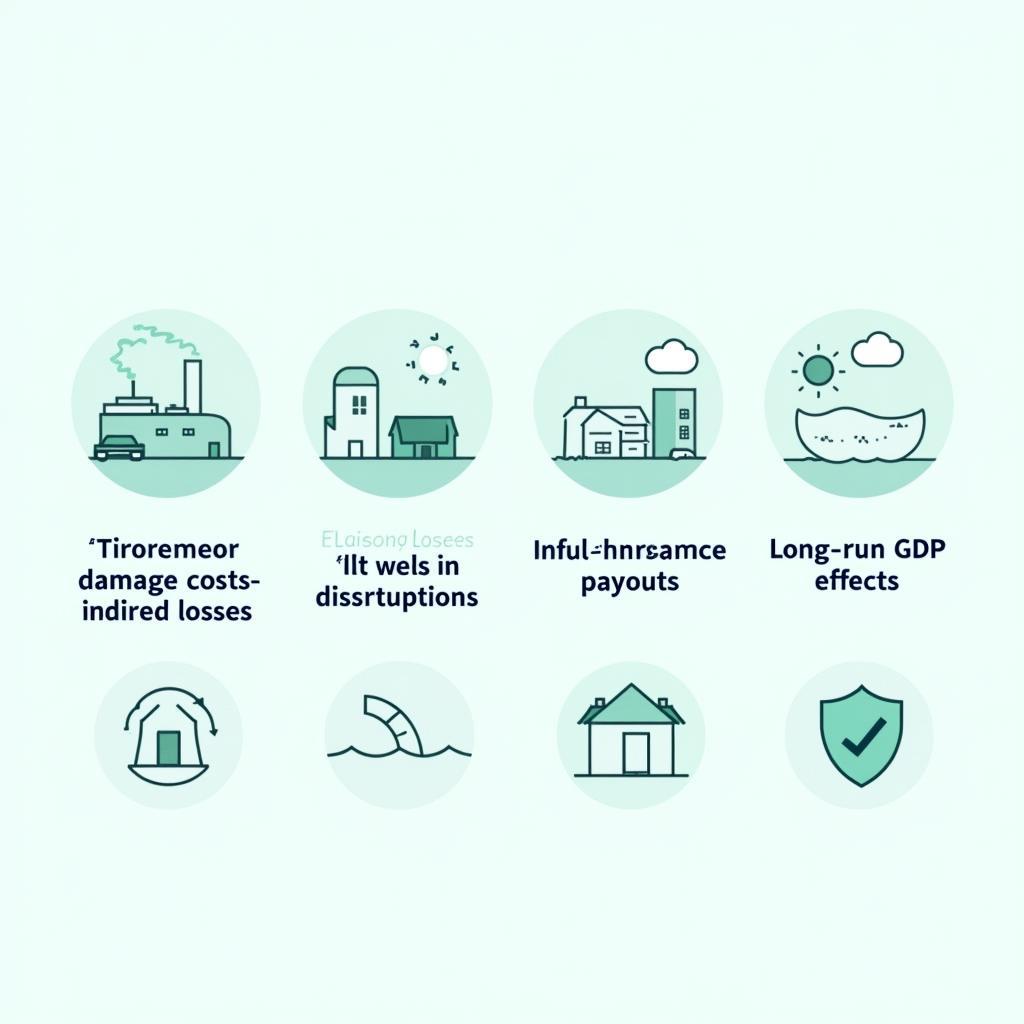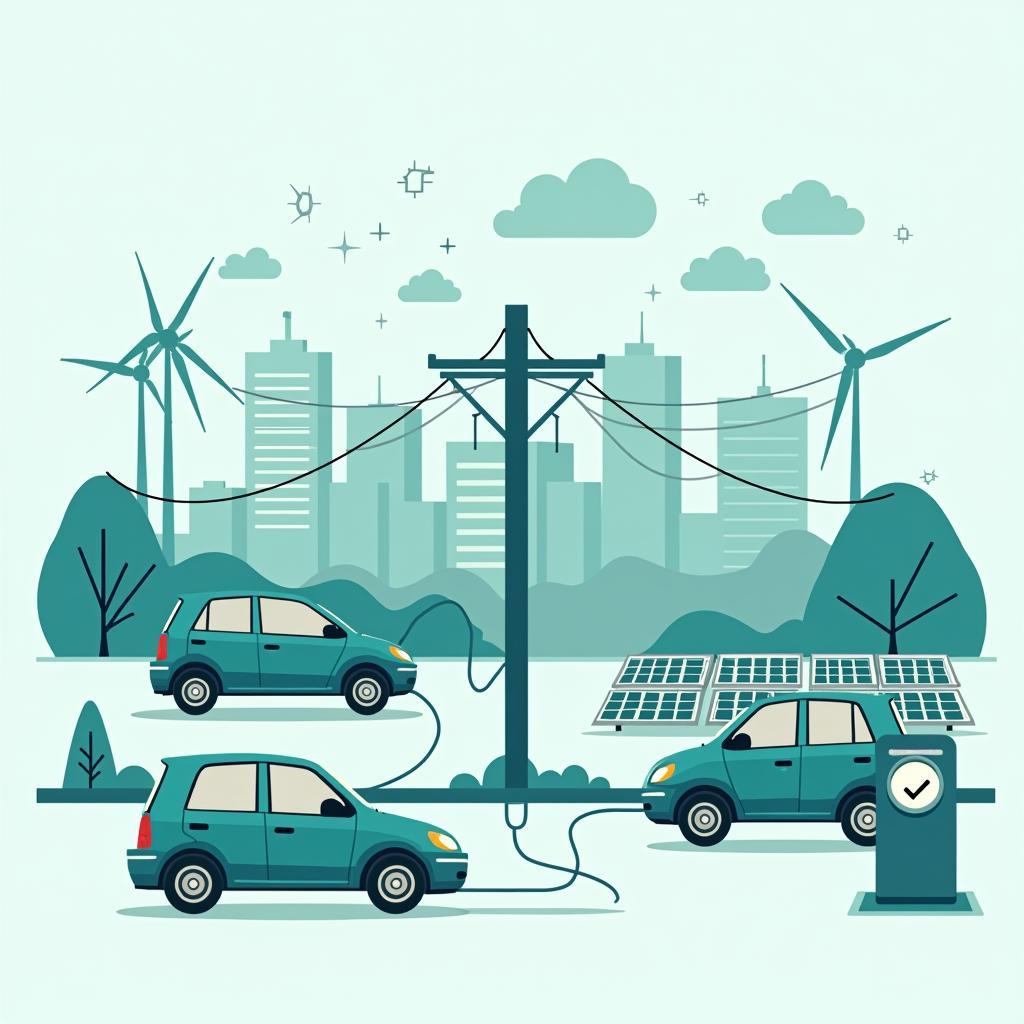Mở bài
What Are The Impacts Of Climate Change On Water Scarcity? Đây là một chủ đề nóng, vừa mang tính học thuật vừa gắn liền với đời sống, thường xuyên xuất hiện trong IELTS Reading, đặc biệt ở các passage về môi trường, khoa học trái đất và chính sách công. Trong đề luyện dưới đây, tôi thiết kế trọn bộ 3 passages với độ khó tăng dần, mô phỏng phong cách Cambridge, giúp bạn hiểu sâu tác động của biến đổi khí hậu đến khan hiếm nước, đồng thời rèn luyện chiến lược xử lý thông tin phức tạp, paraphrase và suy luận. Bạn sẽ nhận được:
- Một đề IELTS Reading đầy đủ 3 passages (Easy → Medium → Hard)
- Dạng câu hỏi đa dạng: MCQ, T/F/NG, Y/N/NG, Matching, Completion, Short Answer
- Đáp án kèm giải thích tập trung vào điểm “bẫy” thường gặp
- Từ vựng học thuật và kỹ thuật làm bài thực chiến
Mức độ phù hợp: học viên từ band 5.0 trở lên muốn củng cố kỹ năng đọc và tăng tốc độ làm bài.
[internal_link: Từ vựng chủ đề Môi trường cho IELTS Reading]
1. Hướng dẫn làm bài IELTS Reading
Tổng Quan Về IELTS Reading Test
- Thời gian: 60 phút cho 3 passages
- Tổng số câu hỏi: 40 câu
- Phân bổ thời gian khuyến nghị:
- Passage 1: 15-17 phút
- Passage 2: 18-20 phút
- Passage 3: 23-25 phút
Chiến Lược Làm Bài Hiệu Quả
- Đọc câu hỏi trước, sau đó đọc passage bằng kỹ thuật skimming và scanning.
- Gạch chân từ khóa và nhận diện paraphrase.
- Quản lý thời gian chặt chẽ, không sa đà một câu quá 90 giây.
- Không bỏ trống câu nào; đoán có cơ sở khi cần.
Các Dạng Câu Hỏi Trong Đề Này
- Multiple Choice
- True/False/Not Given
- Sentence Completion
- Yes/No/Not Given
- Matching Headings
- Summary/Note Completion
- Matching Features/Sentence Endings
- Short-answer Questions
[internal_link: Kỹ thuật skimming & scanning trong IELTS Reading]
2. IELTS Reading Practice Test
PASSAGE 1 – Thirsty Cities: Everyday Signals of a Changing Climate
Độ khó: Easy (Band 5.0-6.5)
Thời gian đề xuất: 15-17 phút
As the planet warms, the journey of a glass of water from source to sink becomes more complicated. Climate change does not only melt distant ice or push storms over the ocean; it shifts rainfall, alters seasons, and changes how water moves through soils, rivers, and aquifers that people rely on every day. In hundreds of towns, tap water is already a daily reminder that weather patterns are becoming less predictable and supplies more fragile.
In many regions, rains now arrive at the “wrong” time. Farmers wait for steady showers in spring but get sudden downpours in late summer. These bursts are dramatic, but they can run off quickly over hard, dry ground and into drains, leaving little infiltration to refill underground stores. In other places, rainy days come fewer and farther between. When rain finally falls, it may be too intense for the land to absorb, causing flash floods rather than recharging wells.
Snowpack is another quiet hero of water supply. Snow keeps water locked up in the mountains and then releases it slowly in spring and early summer. Warmer winters mean less snow and earlier melt, so rivers peak before cities and farms truly need them. By late summer, streams can be thin and warm, which also harms fish and ecosystems that depend on cooler flows.
Heat waves add pressure from the demand side. Hotter air pulls more moisture from soil and open water through evaporation, and plants drink more too, a process called evapotranspiration. Households use extra water for cooling, gardening, and showers. In some cities, daily demand surges during heat waves, exactly when supplies are under stress. If temperatures keep rising, pressure on both sides of the tap will intensify.
Near the coast, rising seas push saltwater into freshwater aquifers, a process known as salinization. Wells on small islands and low-lying deltas may taste brackish, or even become unusable. For communities that rely on groundwater, salt intrusion can silently destroy decades of careful stewardship.
Human systems can make the problem worse—or better. Leaky pipes can waste huge amounts of treated water before it reaches homes. Overpumping groundwater can cause land to sink, a process called subsidence, damaging infrastructure and reducing the aquifer’s ability to store water in the future. But cities can also repair networks, meter usage, and reward efficiency.
Some places experiment with desalination, turning seawater into drinking water. This is a dependable, drought-proof source, but it is energy-intensive and expensive. Others choose to reuse water: after treatment, it can irrigate parks, supply industry, or even go back into aquifers. During Cape Town’s near “Day Zero,” residents learned to cut per-capita use dramatically by changing habits, fixing leaks, and rethinking what is “essential”.
Farmers adapt as well. Drip irrigation delivers water directly to roots, reducing losses. Changing crops to more drought-tolerant varieties, using mulch to keep soil moist, and watering at night can help the same field survive with less. Many of these steps are not new; what is new is the urgency to adopt them widely and quickly.
Communities can capture more rain where it falls. Rain gardens, permeable pavements, and small storage ponds help rain sink into the ground instead of rushing away. These nature-based solutions, together with smart planning, can stretch water further. Yet fairness matters: equitable water policies should protect public health, ensure a basic lifeline for everyone, and avoid penalizing the poorest when prices rise.
Climate change reshapes water stories one neighborhood at a time. The signals—strange seasons, salty wells, tired rivers, and stressed budgets—are already visible. While no single fix exists, a mix of efficiency, diverse supplies, and community action can build resilience. Not only must we secure more water, but we must also learn to use it more wisely.
 Hình minh họa tác động biến đổi khí hậu đến khan hiếm nước trong IELTS Reading
Hình minh họa tác động biến đổi khí hậu đến khan hiếm nước trong IELTS Reading
Questions 1-13
Questions 1-5
Choose the correct letter, A, B, C or D.
-
According to the passage, a key problem with intense rainfall is that it
A. improves soil fertility
B. reduces the need for groundwater
C. does not adequately recharge aquifers
D. prevents flash flooding -
The role of snowpack in water supply is to
A. provide immediate runoff in winter
B. store water and release it gradually
C. warm river water for fish
D. reduce evaporation in summer -
Heat waves increase water demand mainly because
A. crops become dormant
B. households and plants use more water
C. desalination becomes cheaper
D. rivers release more water -
Salinization in coastal aquifers is primarily caused by
A. river dams
B. sea-level rise pushing in saltwater
C. heavy rainfall flushing salts out
D. decreased household use -
The passage suggests desalination is
A. low-cost and energy-free
B. always the best solution
C. reliable but energy-intensive
D. harmful to public health
Questions 6-10
Do the following statements agree with the information in the passage?
Write True, False or Not Given.
- Flash floods are beneficial because they help refill wells quickly.
- Overpumping groundwater can lead to land subsidence.
- Cape Town ultimately reached “Day Zero” and shut off all taps.
- Drip irrigation targets water delivery to plant roots.
- Equity considerations are irrelevant when water prices rise.
Questions 11-13
Complete the sentences below.
Choose NO MORE THAN TWO WORDS from the passage for each answer.
- Rain that arrives in sudden bursts may produce __ rather than soaking into soil.
- Warmer winters can cause rivers to peak __ than cities need them.
- Small urban features like __ help rain sink into the ground.
PASSAGE 2 – Hydrological Tipping Points: How Warming Rearranges Water
Độ khó: Medium (Band 6.0-7.5)
Thời gian đề xuất: 18-20 phút
A
The water cycle is not a static diagram but a living system shaped by temperature. As air warms, it can hold more moisture—about 7% more per degree Celsius, a relationship described by the Clausius–Clapeyron equation. This intensifies the hydrological cycle: more evaporation from oceans and land, and potentially more precipitation. Yet the distribution is uneven. Wet regions tend to get wetter, while subtropical dry zones expand, making already marginal landscapes more arid and vulnerable to water scarcity.
B
Rainfall variability increases as well. Instead of gentle, frequent precipitation, many places see longer dry spells interrupted by heavier storms. Paradoxically, a region can experience both more extreme rainfall and more severe drought. Hydrologists call this a drought–deluge regime: soils swing from desiccation to saturation, rivers from trickles to torrents. Infrastructure designed for “average” conditions struggles when “average” becomes rare.
C
Snow-dependent basins face a structural shift. Warming reduces snow accumulation and advances melt timing. Hydrographs peak earlier, flattening late-summer flows that people, fish, and riparian ecosystems depend upon. Reservoirs must choose: release water early to prevent floods, or store it and risk spillway failures during extreme storms. In this narrowing operational window, managers seek dynamic rules, improved forecasts, and integrated coordination across agencies and borders.
D
Groundwater, often considered a buffer, is under pressure. In many aquifers, withdrawals outpace natural recharge, particularly where monsoons shift or where urban paving limits infiltration. Depletion can be masked for years until wells run dry or pumping costs soar. Moreover, some aquifers are fossil—their water accumulated millennia ago—so climate-era “recharge” is effectively negligible on human timescales. The result is a delayed but profound exposure to risk.
E
Compounding events amplify impacts: a marine heatwave reduces coastal fog; simultaneously, a heat dome boosts crop water demand, while wildfire ash clogs treatment plants after a rare downpour. These cross-system cascades connect the water–energy–food nexus. When hydropower reservoirs run low, electricity prices rise, pushing farmers toward diesel pumps that in turn increase emissions. Without careful policy, feedback loops can lock communities into more vulnerability.
F
Solutions require both supply innovation and demand reform. Nature-based approaches—restoring wetlands, reforesting headwaters, reconnecting floodplains—can slow, store, and filter water while enhancing biodiversity. On the demand side, tiered pricing, efficient appliances, and smart irrigation help. Cities diversify portfolios with recycled water and, where feasible, desalination, but governance is crucial. Transparent data, transboundary cooperation, and attention to equity determine whether gains endure.
 Chiến lược IELTS Reading cho chủ đề biến đổi khí hậu và khan hiếm nước
Chiến lược IELTS Reading cho chủ đề biến đổi khí hậu và khan hiếm nước
Questions 14-26
Questions 14-18
Do the following statements agree with the views of the writer?
Write Yes, No or Not Given.
- Warming air increases its capacity to hold moisture.
- All dry regions will become wetter due to intensified precipitation.
- Managing reservoirs will become simpler as forecasts improve.
- Some aquifers cannot be meaningfully recharged within human lifetimes.
- Reducing hydropower output can indirectly increase greenhouse gas emissions.
Questions 19-22
Choose the correct heading for paragraphs A–F from the list of headings below.
Write the correct number, i–x, in boxes 19–22 on your answer sheet.
List of Headings
i. The promise and limits of groundwater as a buffer
ii. A climate rule of thumb for atmospheric moisture
iii. Why averages mislead designers
iv. The rise of water markets
v. Balancing reservoirs under changing peaks
vi. Cascading risks across sectors
vii. Technological fixes for desalination
viii. The shifting monsoon calendars
ix. Policy, portfolios, and nature-based remedies
x. Urbanization as a source of new rainfall
- Paragraph A
- Paragraph C
- Paragraph D
- Paragraph E
Questions 23-26
Complete the summary below.
Choose NO MORE THAN THREE WORDS from the passage for each answer.
Summary
As temperatures rise, the hydrological cycle intensifies but becomes uneven, with some zones getting wetter and others more 23 ____. Regions may oscillate between drought and deluge, making 24 ____ unreliable for design. In snow-fed basins, earlier peaks narrow the 25 ____ for safe reservoir operations. Meanwhile, certain 26 ____ offer little chance for meaningful recharge over human timeframes.
PASSAGE 3 – Governing Scarcity: Economics, Ethics, and Climate-Resilient Water Futures
Độ khó: Hard (Band 7.0-9.0)
Thời gian đề xuất: 23-25 phút
When climate change tightens the water balance, scarcity is not merely a hydrological fact; it becomes a question of how societies decide to share risk, allocate rights, and invest in resilience. Historically, water governance has oscillated between command-and-control regulation and market-inspired tools. Each has merits and blind spots. The challenge now is to design institutions that remain legitimate and effective under deep uncertainty, while honoring obligations to public health and ecosystem integrity.
Pricing is often proposed as the most economically efficient signal. Properly designed tariffs can reflect scarcity by increasing marginal prices while protecting basic needs through lifeline blocks or targeted subsidies. Yet price signals fail when households lack meters, when political resistance caps rates below cost, or when non-price barriers—such as cultural norms or rental constraints—limit behavioral response. Moreover, a narrow focus on efficiency can erode equity, as low-income families spend a higher share of income on water.
Rights-based approaches, including prior appropriation or riparian doctrines, provide legal stability but may lock in historical allocations that are misaligned with current climate realities. Water markets and tradable entitlements promise flexibility: users can sell conserved water to those who value it more. In practice, transaction costs, inadequate measurement, and third-party impacts (e.g., on wetlands or Indigenous water rights) complicate trading. Designing markets that internalize environmental flows and community safeguards is both technically and ethically demanding.
Diversification of supply is a recurring theme in climate adaptation. Utilities assemble portfolios: stormwater capture, aquifer recharge, potable reuse, and desalination. Each source has distinct risk profiles across drought, energy price shocks, and contamination events. Portfolio theory suggests value in non-correlated sources, but operationalizing this insight requires governance that can evaluate trade-offs transparently and coordinate across agencies. A city that invests in desalination may need renewable energy procurement to avoid lock-in to carbon-intensive operations.
Under deep uncertainty—where probabilities are disputed and models disagree—classical optimization falters. Approaches like robust decision-making (RDM) and adaptive pathways shift the emphasis from finding the best plan to identifying strategies that perform adequately across many futures and can be adjusted as signals emerge. Trigger points—such as a threshold in reservoir drawdown or multi-year precipitation deficits—act as signposts for switching actions. This procedural flexibility enhances resilience but demands monitoring, institutional learning, and political patience.
Justice considerations cut across all choices. Indigenous communities often possess senior yet under-recognized water rights, along with knowledge systems that can enrich ecological management. Gender dynamics matter: in many places, women bear the costs of water scarcity through unpaid labor. Climate justice asks who pays for upgrades, how disconnections are prevented, and whether emergency measures (e.g., tanker deliveries) risk normalizing a two-tiered service. Legitimacy grows when affected groups co-design plans and when grievance mechanisms are accessible.
Digital tools promise gains but also carry risks. Smart meters, satellite remote sensing, and “digital twin” models can sharpen situational awareness, detect leaks, and test interventions virtually. Yet data gaps, cybersecurity threats, and algorithmic bias can reproduce inequities if not governed carefully. Transparency—about methods, assumptions, and uncertainties—enables scrutiny and trust.
In the end, governing scarcity under climate change is an exercise in institutional craft: combining price signals with legal safeguards, portfolios with emissions goals, flexibility with accountability. The goal is not to eliminate risk but to distribute it fairly, keep essential services reliable, and protect the ecosystems that make water a renewable gift. Only by aligning efficiency, equity, and ecology can societies turn climate pressure into a catalyst for wiser water.
Questions 27-40
Questions 27-31
Choose the correct letter, A, B, C or D.
-
The author suggests that water pricing alone is insufficient mainly because
A. it always raises consumption among low-income users
B. non-price barriers and political constraints limit its effectiveness
C. meters make it impossible to measure usage accurately
D. lifeline blocks eliminate scarcity signals entirely -
A drawback of rights-based allocation systems is that they
A. are illegal in most countries
B. cannot be enforced in courts
C. may entrench outdated distributions under new climates
D. eliminate environmental flow requirements -
Building a diversified supply portfolio is recommended because
A. non-correlated sources can stabilize risk across scenarios
B. desalination is carbon-neutral everywhere
C. it reduces the need for cooperation across agencies
D. customers always prefer portfolio complexity -
Robust decision-making and adaptive pathways are valuable in part because they
A. require precise probability estimates
B. focus on optimal plans in a single forecast
C. emphasize flexibility and performance across many futures
D. discourage monitoring and learning -
According to the passage, digital tools in water governance
A. replace the need for transparency
B. can improve awareness but may reproduce inequities
C. eliminate cybersecurity risks
D. guarantee unbiased algorithms
Questions 32-36
Match each policy tool with its characteristic or potential concern.
Choose the correct letter, A–G, and write the letter in boxes 32–36.
Policy tools
32. Tiered tariffs
33. Tradable water rights
34. Desalination investment
35. Adaptive pathways
36. Smart metering
Characteristics / Concerns
A. Requires renewable energy to avoid carbon lock-in
B. Vulnerable to algorithmic bias if poorly governed
C. Can protect basic needs while signaling scarcity
D. Faces transaction costs and third-party impacts
E. Anchored in fixed historical allocations
F. Uses triggers to switch actions over time
G. Eliminates the need for legal safeguards
Questions 37-40
Answer the questions below.
Choose NO MORE THAN TWO WORDS for each answer.
- Which groups’ water rights are highlighted as often under-recognized?
- Which unpaid burden may increase for women under water scarcity?
- What kinds of indicators help decide when to change actions in adaptive plans?
- What three aims must be aligned to turn “climate pressure” into wiser water?
3. Answer Keys – Đáp Án
PASSAGE 1: Questions 1-13
- C
- B
- B
- B
- C
- False
- True
- False
- True
- False
- flash floods
- earlier
- rain gardens
PASSAGE 2: Questions 14-26
- Yes
- No
- No
- Yes
- Yes
- ii
- v
- i
- vi
- arid
- averages
- operational window
- aquifers
PASSAGE 3: Questions 27-40
- B
- C
- A
- C
- B
- C
- D
- A
- F
- B
- Indigenous communities
- unpaid labor
- signposts
- efficiency, equity, and ecology
4. Giải Thích Đáp Án Chi Tiết
Passage 1 – Giải Thích
- Câu 1 (C – does not adequately recharge aquifers): Đoạn 2 nêu các trận mưa dữ dội chạy tràn, ít thấm, “leaving little infiltration to refill underground stores”.
- Câu 3 (B): Đoạn 4 nói heat waves làm “plants drink more” và households dùng nhiều nước hơn.
- Câu 5 (C): Đoạn 7 mô tả desalination “dependable” nhưng “energy-intensive and expensive”.
- Câu 8 (False): Đoạn 7 nói Cape Town “learned to cut per-capita use”, không phải đạt Day Zero.
- Câu 11: “flash floods” nằm cuối đoạn 2.
Passage 2 – Giải Thích
- Câu 14 (Yes): Đoạn A – Clausius–Clapeyron.
- Câu 16 (No): Đoạn C nói quản lý hồ chứa khó hơn trong “narrowing operational window”.
- Câu 17 (Yes): Đoạn D – aquifers “fossil… recharge negligible on human timescales”.
- Câu 22 (vi – Cascading risks across sectors): Đoạn E nhấn mạnh water–energy–food nexus và hiệu ứng dây chuyền.
- Tóm tắt: “arid”, “averages”, “operational window”, “aquifers” đều xuất hiện trực tiếp.
Passage 3 – Giải Thích
- Câu 27 (B): Đoạn 2 nêu rào cản phi giá, chính trị, và hạn chế đáp ứng hành vi.
- Câu 29 (A): Đoạn 3: “non-correlated sources” giúp ổn định rủi ro.
- Câu 30 (C): Đoạn 4 mô tả RDM/adaptive pathways nhấn mạnh linh hoạt, nhiều kịch bản.
- Câu 36 (B): Đoạn 6 chỉ ra rủi ro “algorithmic bias”.
- Câu 40: Kết luận đoạn cuối: “aligning efficiency, equity, and ecology”.
5. Từ Vựng Quan Trọng Theo Passage
Passage 1 – Essential Vocabulary
| Từ vựng | Loại từ | Phiên âm | Nghĩa tiếng Việt | Ví dụ từ bài | Collocation |
|---|---|---|---|---|---|
| aquifer | n | /ˈækwɪfər/ | tầng chứa nước | rivers and aquifers | aquifer recharge |
| evaporation | n | /ɪˌvæpəˈreɪʃn/ | bốc hơi | through evaporation | evaporation rate |
| salinization | n | /ˌsælɪnaɪˈzeɪʃn/ | nhiễm mặn | known as salinization | coastal salinization |
| subsidence | n | /səbˈsaɪdns/ | sụt lún | cause land to sink, subsidence | land subsidence |
| desalination | n | /diːˌsælɪˈneɪʃn/ | khử mặn | experiment with desalination | desalination plant |
| equitable | adj | /ˈekwɪtəbl/ | công bằng | equitable water policies | equitable access |
| infiltration | n | /ˌɪnfɪlˈtreɪʃn/ | thấm | little infiltration | infiltration capacity |
| flash flood | n | /ˌflæʃ ˈflʌd/ | lũ quét | causing flash floods | flash-flood risk |
| drip irrigation | n | /drɪp ˌɪrɪˈɡeɪʃn/ | tưới nhỏ giọt | Drip irrigation delivers | drip system |
| mulch | n/v | /mʌltʃ/ | lớp phủ gốc | using mulch | mulch the soil |
| brackish | adj | /ˈbrækɪʃ/ | lợ | wells may taste brackish | brackish water |
| diverse supplies | n | /daɪˈvɜːrs/ | nguồn cung đa dạng | mix of efficiency, diverse supplies | diversify supplies |
Passage 2 – Essential Vocabulary
| Từ vựng | Loại từ | Phiên âm | Nghĩa tiếng Việt | Ví dụ từ bài | Collocation |
|---|---|---|---|---|---|
| Clausius–Clapeyron | n | — | quan hệ CC (ẩm khí) | described by Clausius–Clapeyron | CC scaling |
| subtropical | adj | /ˌsʌbˈtrɒpɪkl/ | cận nhiệt đới | subtropical dry zones expand | subtropical belt |
| arid | adj | /ˈærɪd/ | khô hạn | more arid | arid regions |
| drought–deluge | n | /draʊt ˈdeljuːʒ/ | hạn – lũ cực đoan | a drought–deluge regime | deluge events |
| desiccation | n | /ˌdesɪˈkeɪʃn/ | khô kiệt | soils swing from desiccation | soil desiccation |
| hydrograph | n | /ˈhaɪdrəɡrɑːf/ | đồ thị dòng chảy | Hydrographs peak earlier | hydrograph peak |
| spillway | n | /ˈspɪlweɪ/ | tràn xả lũ | risk spillway failures | spillway capacity |
| operational window | n | — | biên vận hành | narrowing operational window | window of operation |
| monsoon | n | /mɒnˈsuːn/ | gió mùa | where monsoons shift | monsoon shift |
| fossil aquifer | n | — | tầng chứa nước cổ | some aquifers are fossil | fossil groundwater |
| compounding events | n | — | sự kiện cộng hưởng | Compounding events amplify | compounding risk |
| water–energy–food nexus | n | — | liên kết nước-năng lượng-lương thực | connect the nexus | nexus trade-offs |
| tiered pricing | n | — | giá bậc thang | tiered pricing help | tiered tariff |
| transboundary | adj | /ˌtrænzˈbaʊndri/ | xuyên biên giới | transboundary cooperation | transboundary basin |
| nature-based | adj | — | dựa vào tự nhiên | nature-based approaches | nature-based solution |
Passage 3 – Essential Vocabulary
| Từ vựng | Loại từ | Phiên âm | Nghĩa tiếng Việt | Ví dụ từ bài | Collocation |
|---|---|---|---|---|---|
| resilience | n | /rɪˈzɪliəns/ | khả năng chống chịu | invest in resilience | climate resilience |
| ecosystem integrity | n | — | toàn vẹn hệ sinh thái | protect ecosystem integrity | ecological integrity |
| lifeline block | n | — | khối lượng tối thiểu | lifeline blocks or subsidies | lifeline tariff |
| equity | n | /ˈekwɪti/ | công bằng | erode equity | equity lens |
| prior appropriation | n | — | quyền theo thứ tự ưu tiên | prior appropriation | appropriation doctrine |
| tradable | adj | /ˈtreɪdəbl/ | có thể giao dịch | tradable entitlements | tradable permits |
| non-correlated | adj | — | phi tương quan | non-correlated sources | non-correlated risks |
| lock-in | n | — | khóa chặt | avoid lock-in | carbon lock-in |
| robust decision-making | n | — | ra quyết định vững | robust decision-making | robust strategies |
| adaptive pathways | n | — | lộ trình thích ứng | adaptive pathways shift emphasis | adaptation pathway |
| signposts | n | /ˈsaɪnpəʊsts/ | biển chỉ dấu | act as signposts | decision signposts |
| knowledge systems | n | — | hệ tri thức | Indigenous knowledge systems | local knowledge systems |
| remote sensing | n | — | viễn thám | satellite remote sensing | remote sensing data |
| digital twin | n | — | bản sao số | digital twin models | utility digital twin |
| legitimacy | n | /lɪˈdʒɪtɪməsi/ | tính chính danh | remain legitimate | institutional legitimacy |
| transparency | n | /trænsˈpærənsi/ | minh bạch | enable transparency | transparency of methods |
| portfolio | n | /pɔːtˈfəʊliəʊ/ | danh mục | assemble portfolios | portfolio diversification |
| safeguards | n | /ˈseɪfɡɑːdz/ | biện pháp bảo vệ | legal safeguards | community safeguards |
6. Kỹ Thuật Làm Bài Theo Từng Dạng Câu Hỏi
Multiple Choice
- Cách làm:
- Đọc kỹ câu hỏi, gạch chân từ khóa chính và từ khóa ngữ nghĩa.
- Đối chiếu paraphrase trong bài; loại trừ đáp án có từ giống nhưng nghĩa không khớp.
- So sánh chi tiết nhỏ (định lượng, quan hệ nhân-quả, phạm vi).
- Lỗi thường gặp:
- Chọn đáp án chứa từ khóa gốc nhưng sai ngữ cảnh.
- Không đọc hết các phương án đến D.
- Ví dụ: P1 Q5. “energy-intensive” ⇒ C (reliable but energy-intensive), loại A/B/D vì trái thông tin hoặc tuyệt đối hóa.
True/False/Not Given
- Phân biệt:
- True: Khớp thông tin (có thể paraphrase).
- False: Mâu thuẫn rõ ràng.
- Not Given: Không đủ dữ kiện.
- Lỗi thường gặp:
- Dùng kiến thức ngoài bài.
- Nhầm Not Given với False vì suy luận quá đà.
- Ví dụ: P1 Q8 (False) vì bài nói Cape Town không đến Day Zero.
Yes/No/Not Given
- Tương tự T/F/NG nhưng dựa trên quan điểm người viết.
- Tập trung động từ chỉ quan điểm: argue, suggest, claim.
- Ví dụ: P2 Q16 (No) vì tác giả cho rằng quản lý hồ chứa khó hơn.
Matching Headings
- Cách làm:
- Skim câu đầu/cuối đoạn để lấy main idea.
- Loại bỏ heading quá chi tiết hoặc chỉ chứa ví dụ.
- Đánh dấu headings đã dùng.
- Ví dụ: P2 đoạn E ⇒ “Cascading risks across sectors”.
Summary/Note Completion
- Xác định loại từ cần điền (noun/adj).
- Chú ý giới hạn NO MORE THAN … WORDS.
- Đối chiếu thứ tự thông tin.
- Ví dụ: “operational window” ở P2 C.
Matching Features/Sentence Endings
- Tạo bảng đối chiếu mini: công cụ – đặc tính.
- Loại trừ bằng logic chính sách và từ khóa chuyên ngành.
- Ví dụ: P3 34–A (desalination ↔ carbon lock-in).
Short-answer Questions
- Đáp án tối đa số từ quy định, đúng chính tả.
- So khớp cụm danh từ chính xác.
- Ví dụ: P3 Q37 “Indigenous communities”.
7. Chiến Lược Đạt Band Cao
Band 6.0-6.5: Nền Tảng
- Skimming để nắm main idea từng đoạn.
- Làm đúng 23–26/40, ưu tiên Passage 1 và 2.
- Tập nhận diện paraphrase cơ bản: drought/dryness, recharge/infiltration.
Band 7.0-7.5: Trung Cấp Cao
- Thành thạo suy luận ở Matching Headings, Y/N/NG.
- Quản lý thời gian: chuyển câu khi quá 90 giây.
- Làm chủ collocations học thuật: operational window, cascading risks.
Band 8.0-9.0: Nâng Cao
- Đọc sâu quan điểm tác giả, ẩn dụ và cấu trúc đối lập.
- Sai số ít hơn 5 câu; xử lý Passage 3 hiệu quả.
- Ghi chú cấu trúc luận điểm và logical connectors để tìm đáp án nhanh.
Kết bài
Tóm Tắt
Chủ đề What are the impacts of climate change on water scarcity? giúp bạn luyện một cụm kiến thức cực kỳ phổ biến trong IELTS Reading: khoa học khí hậu, tài nguyên nước và chính sách. Ba passages tăng dần độ khó mô phỏng sát đề thật, kèm đáp án và giải thích trọng tâm, giúp bạn tự chấm và rút kinh nghiệm. Bảng từ vựng học thuật và kỹ thuật làm bài theo dạng câu hỏi sẽ củng cố khả năng skimming, scanning, nhận diện paraphrase, và suy luận. Hãy lưu lại bài này để luyện định kỳ, tăng tốc độ, và tối ưu điểm số phần Reading. Khi đã quen với cấu trúc và chiến lược, bạn sẽ tự tin hơn trước mọi biến thể của đề liên quan đến climate change và water scarcity trong các kỳ thi sắp tới.


